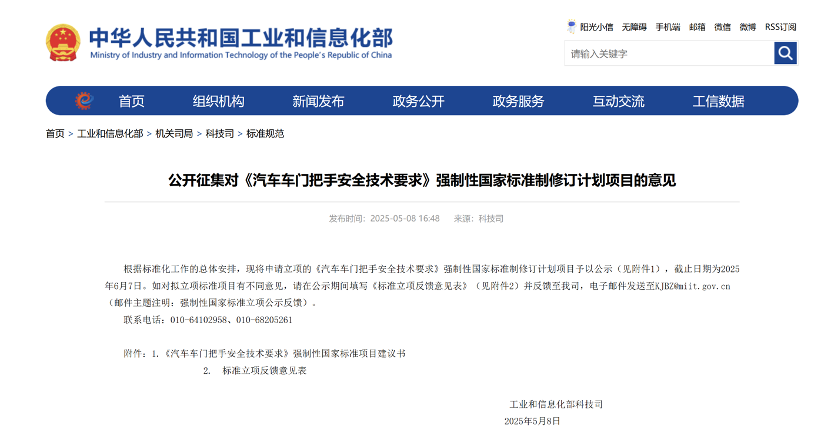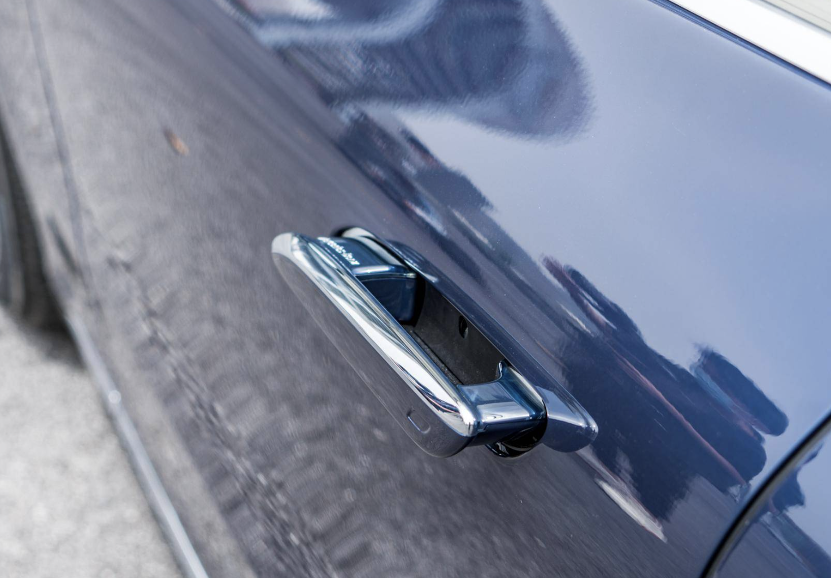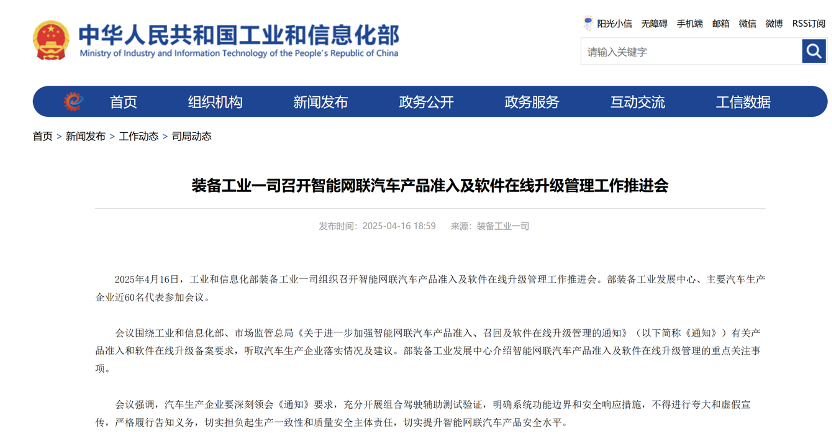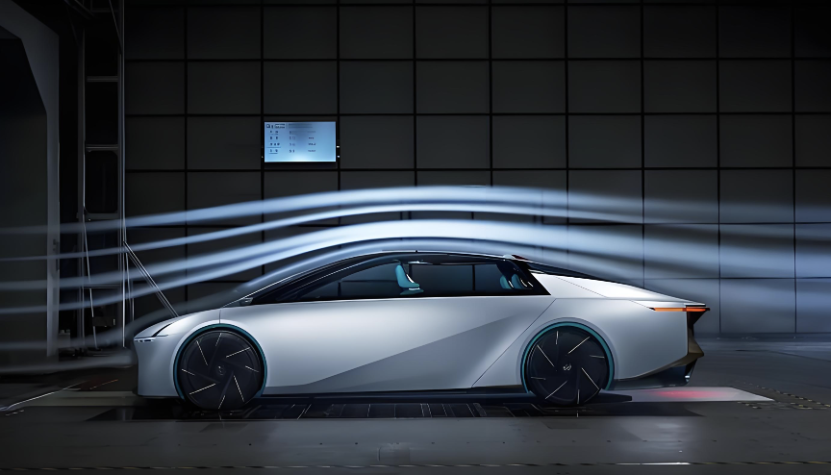Regulating Door Handles: The Next Frontier After Batteries and Intelligent Driving
![]() 05/12 2025
05/12 2025
![]() 726
726
Recently, the Ministry of Industry and Information Technology (MIIT) officially released a document seeking public opinion on the revision of the mandatory national standard titled "Technical Requirements for Safety of Automobile Door Handles." The public consultation period ends on June 7, 2025.

The MIIT notes that with the rapid advancements in automotive electrification and intelligence, flush door handles have gained widespread adoption due to their aesthetic appeal and futuristic design. However, these handles have exposed issues such as insufficient strength and potential safety hazards in their control logic, including power failure and pinching risks, which can be problematic during emergency evacuation scenarios. To address these concerns, the MIIT proposes to enhance the safety logic of door handles in accident situations, introduce safety redundancy requirements like mechanical or power-off protection, standardize the safety markings of flush interior door handles and emergency interior door handles, ensure the visibility of these markings, reduce the difficulty of escaping in emergencies, and ensure the structural integrity of door handles. Currently, there are no direct specialized international standards for flush door handles, making this new MIIT regulation a timely fill to the gap.

This marks the second time the state has regulated automotive-related technologies, following the regulation of intelligent driving. In recent years, major automakers have introduced alluring marketing slogans such as "full-scenario intelligent driving" and "zero takeover" to stand out in the fiercely competitive market. Some have even coined non-standard terms like "L2.9 with unlimited L3 capabilities" to create the perception that L3-level autonomous driving technology is already available. With automakers' aggressive marketing, many consumers have overestimated the intelligent driving capabilities of vehicles, thereby lowering their guard regarding safe driving. According to data from the China Automotive Technology and Research Center (CATARC), traffic accidents caused by misuse of intelligent driving functions surged by 217% year-on-year in the first quarter of 2025. In response, the MIIT issued a new regulation on intelligent driving supervision in early April 2025, emphasizing that automakers must clearly define system functional boundaries and safety response measures, refrain from exaggerated and misleading advertising, strictly fulfill their obligation to inform, effectively assume responsibility for production consistency and quality safety, and significantly enhance the safety level of intelligent and connected vehicle products.

Previously, the MIIT also issued the "strictest battery safety order in history," requiring that power batteries must achieve "no fire, no explosion" from July 1, 2026. As automotive products have become increasingly homogeneous, with configurations reaching their limits, automakers have sought new technological labels to capture consumers' attention. This has led to marketing breakthroughs based on various performance indicators such as fuel consumption, power parameters, thermal efficiency, and drag coefficient. However, due to incomplete rules and standards, performance labels like thermal efficiency and drag coefficient have gradually become tools for automakers to compete on parameters. Fuel consumption values have become standardized, thermal efficiency numbers continue to climb, power and torque figures rise relentlessly, and drag coefficients decline steadily. Ultimately, the final interpretation of these figures rests with the manufacturers.

Recently, a controversy emerged. According to a video posted by auto blogger "Zurich Beileye," an independent wind tunnel test was conducted on the AITO M7 at the CATARC wind tunnel laboratory in Tianjin, revealing a drag coefficient of 0.28Cd. This figure differs by over 30% from the official claim of 0.21Cd and is comparable to the drag coefficient of fuel vehicles from many years ago. It is noteworthy that the drag coefficient of vehicles is not strictly regulated by laws, regulations, or national standards. As a result, there is currently no unified, transparent, and fair verification mechanism for wind tunnel testing of vehicles in China. This has led to uncertainty regarding the accuracy of the drag test conducted by AITO versus the blogger "Zurich Beileye." When automakers' marketing practices frequently deviate from norms, regulatory intervention becomes necessary to resolve these issues. Currently, the MIIT is already undertaking rectification efforts regarding flush door handles, intelligent driving, and batteries. Not long ago, the European New Car Assessment Programme (Euro NCAP) announced that starting from January 2026, all new vehicles submitted for testing will be mandatory to be equipped with designated physical buttons. Euro NCAP aims to emphasize that drivers should refrain from touch operations such as swiping, clicking, or screen switching while driving. Some analysts point out that this is actually a regulation by Euro NCAP on the currently popular screen operation trend.
(Images sourced from the internet, remove if infringing)





